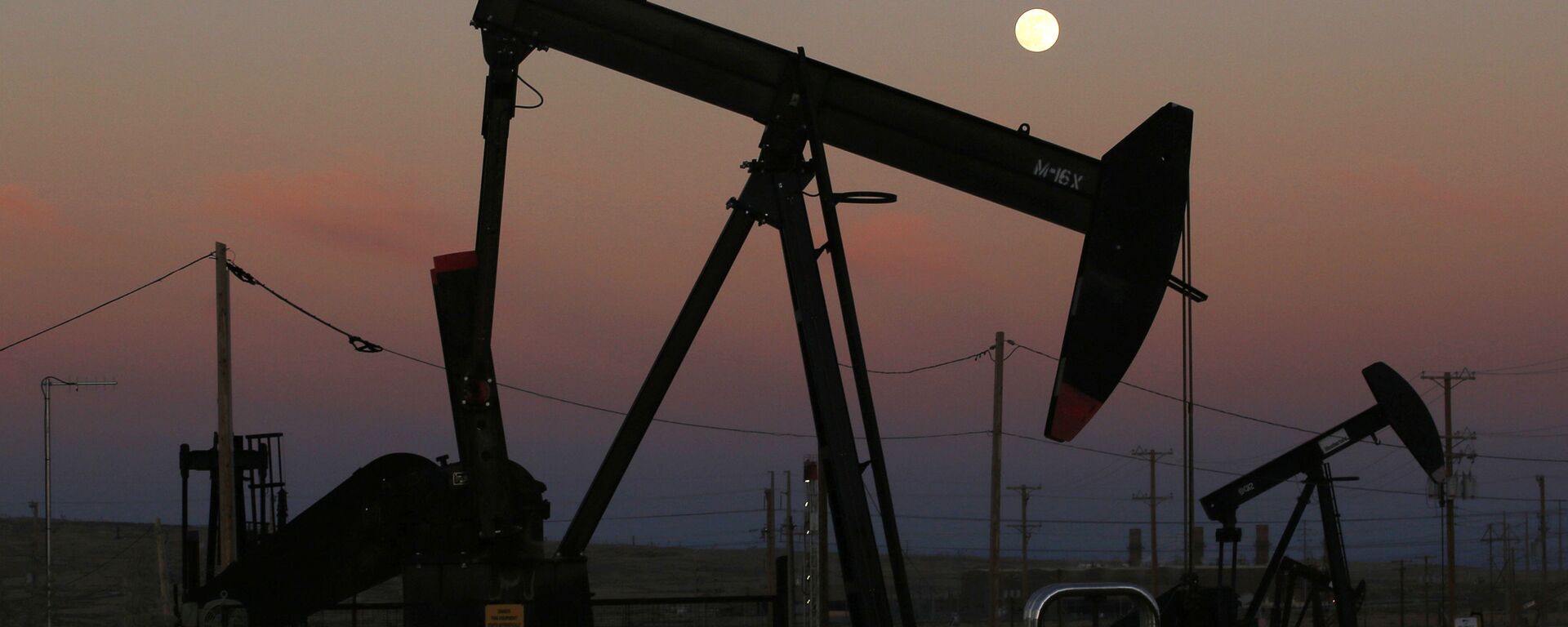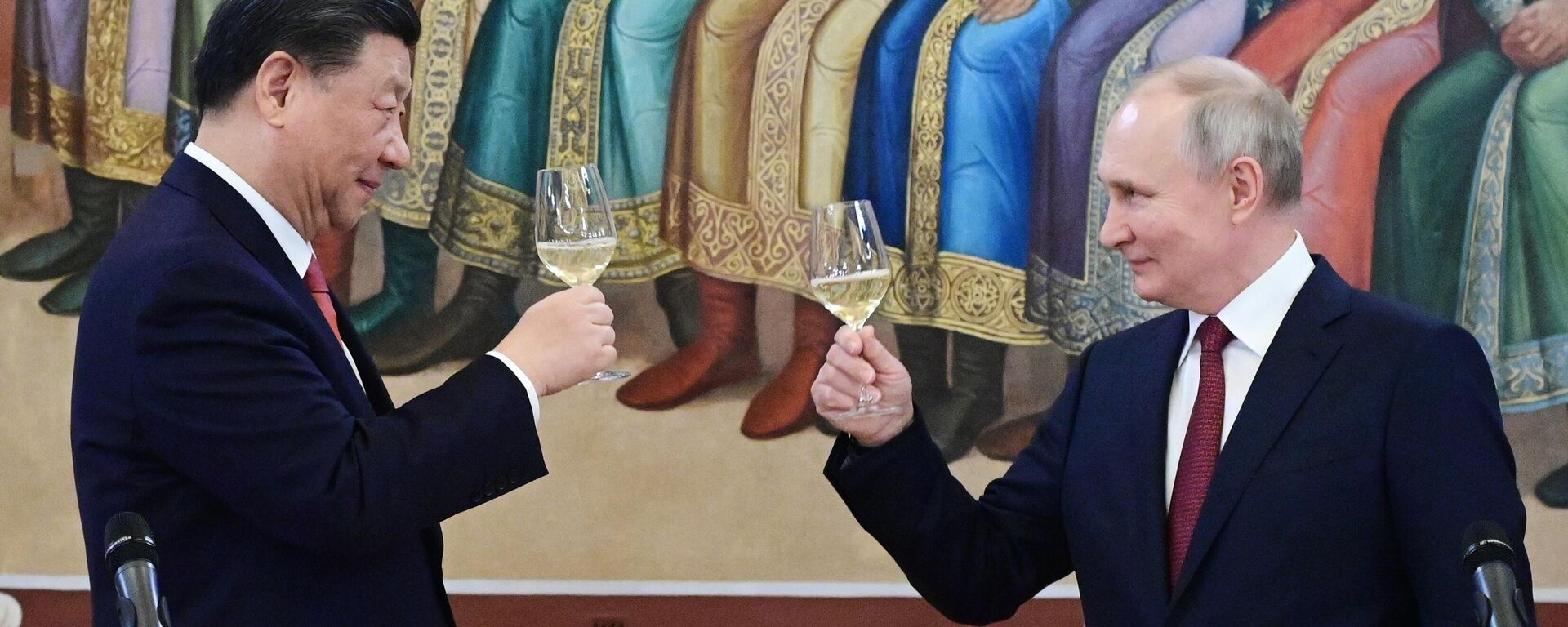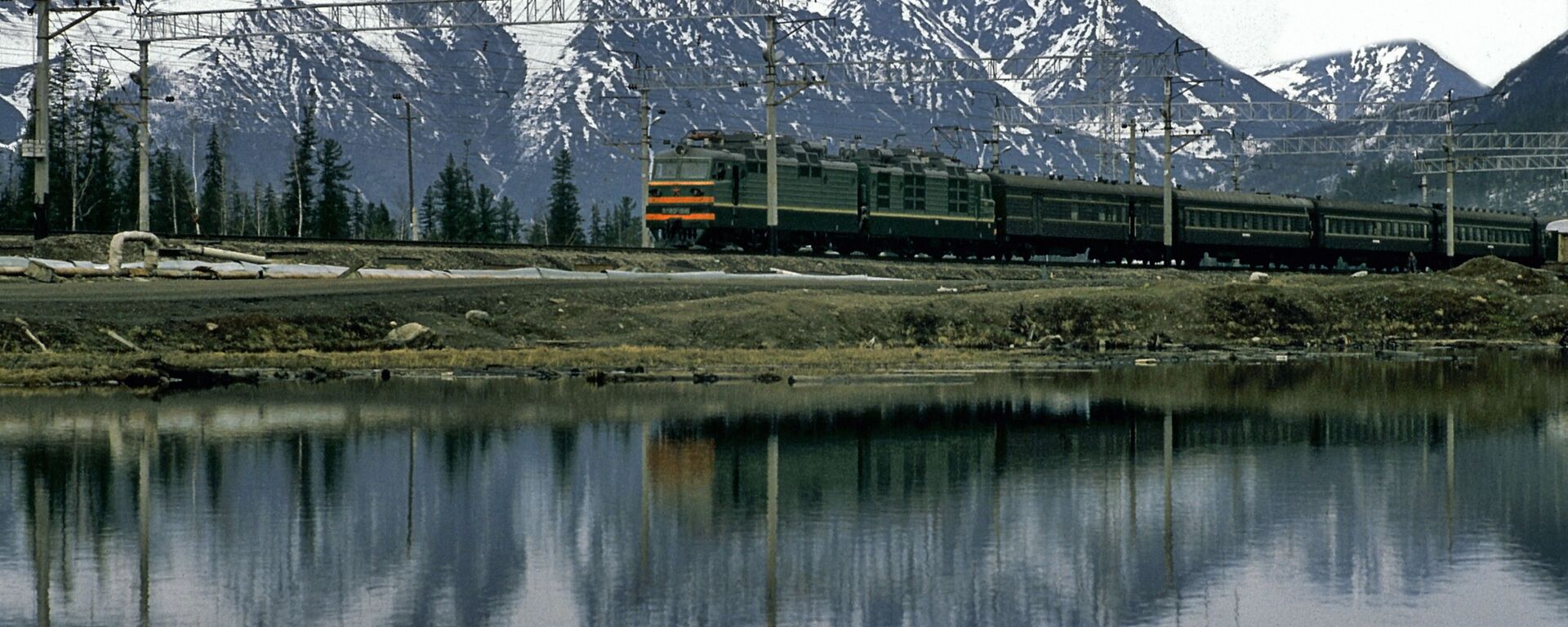https://sputnikglobe.com/20230606/iran-eyes-regional-energy-hub-status-through-cooperation-with-turkmenistan-1110962353.html
Iran Eyes Regional Energy Hub Status Through Cooperation With Turkmenistan
Iran Eyes Regional Energy Hub Status Through Cooperation With Turkmenistan
Sputnik International
Iran is one of the largest oil and gas producers in the world, selling most of its energy to Asian markets amid US threats of secondary sanctions. In light of the restrictions, the Islamic Republic has pushed to dramatically ramp up its economic, energy, and security cooperation with its Eurasian neighbors.
2023-06-06T18:05+0000
2023-06-06T18:05+0000
2023-06-06T18:20+0000
economy
ayatollah ali khamenei
gurbanguly berdimuhamedow
iran
turkmenistan
russia
gas
oil and gas
energy
natural gas
https://cdn1.img.sputnikglobe.com/img/105330/35/1053303507_0:180:1920:1260_1920x0_80_0_0_096e406b323e63f72dcfdc87f2fecee5.jpg
Iran is interested in becoming a major regional energy hub by making effective use of a gas swap agreement with Turkmenistan.“While the previous administration had concentrated its economic activities on Western countries, the current administration activated the energy diplomacy and revived its trade cooperation with neighboring countries, especially Turkmenistan,” Malek Shariati, a spokesman for the Iranian parliament’s Energy Commission, was quoted as saying by local media.Increasing gas cooperation between Tehran and Ashgabat would serve two purposes, according to the spokesman: turning Iran into an energy hub, and helping to meet growing demand for gas in Iran’s northern and northeastern provinces.Iran has the capacity to import between 40 and 50 million cubic meters of gas from Turkmenistan per day, according to Shariati.Iran, Turkmenistan, and Azerbaijan signed a 1.5-2 billion cubic meter trilateral gas swap agreement in 2021, under which Iran would receive natural gas from Turkmenistan and export an equivalent amount to Azerbaijan. The three countries signed a memorandum of understanding to double the swamp amount last year.Iranian Supreme Leader Ayatollah Ali Khamenei met with Turkmen President Gurbanguly Berdimuhamedow last Wednesday, saying there was tremendous potential for expanded economic cooperation between Tehran and Ashkhabad in electricity, gas, roads, and water. “The Islamic Republic is ready for cooperation in these areas,” Khamenei said.Turkmenistan has over 19.5 trillion cubic meters of proven natural gas reserves, fourth largest in the world after Russia, Iran, and Qatar. Iran has over 34 trillion cubic meters of proven natural gas, but its major gas fields are concentrated in the country’s south, hence the need for imports from its neighbor, particularly in the winter months.Energy HubIran has expressed ambitions for energy hub status amid efforts to integrate more closely with Eurasian economic and political organizations, and a rethink of hopes to restore cooperation with Western energy buyers as its oil and gas continue to hang under the Sword of Damocles of American secondary sanctions threats. Last year, Parliamentary Energy Commission member Mustafa Nakhai said Iran’s membership in the Shanghai Cooperation Organization would become an “opportunity…to improve Iran’s position in the field of energy and become the energy hub of the region.”Last October, Iranian Oil Minister Javad Owji said oil and gas cooperation with Russia would also assist in the Islamic Republic’s energy hub ambitions. Owji pointed to joint Russian-Iranian investments in exploration and production, technology swap agreements, and a deal seeing Iran and Russia jointly building oil pipelines from Iran to Oman and Iran to Pakistan. The minister estimated that agreements between Iran and Russia in the energy sector amount to some $40 billion.Tehran and Moscow signed two major cooperation agreements and eight memorandums of understanding in talks in Tehran last month, covering everything from energy and technology to the creation of a joint market, including an intergovernmental agreement on the construction of the Rasht-Astana railway line. The latter, to be built over the next three years, is expected to boost trade via the international North-South Transport Corridor – an ambitious 7,200 km trade route linking the Caspian Sea neighbors and Russia to the Persian Gulf and India, without using Western-controlled sea lanes.Russian President Vladimir Putin expects the new route to cut the transit time of goods from northern Russia and India by 2/3 or even more compared to traditional routes when completed.
https://sputnikglobe.com/20230605/how-will-saudi-arabias-oil-cuts-affect-energy-market-and-when-will-brent-hit-100-1110928109.html
https://sputnikglobe.com/20230526/pepe-escobar-eurasian-heartland-rises-to-challenge-the-west-1110600622.html
https://sputnikglobe.com/20230517/russian-deputy-pm-novak-reveals-details-of-ambitious-eurasian-trade-route-1110423788.html
iran
turkmenistan
russia
Sputnik International
feedback@sputniknews.com
+74956456601
MIA „Rossiya Segodnya“
2023
News
en_EN
Sputnik International
feedback@sputniknews.com
+74956456601
MIA „Rossiya Segodnya“
Sputnik International
feedback@sputniknews.com
+74956456601
MIA „Rossiya Segodnya“
iran, turkmenistan, energy hub, natural gas, gas, oil, energy, purchase, swap
iran, turkmenistan, energy hub, natural gas, gas, oil, energy, purchase, swap
Iran Eyes Regional Energy Hub Status Through Cooperation With Turkmenistan
18:05 GMT 06.06.2023 (Updated: 18:20 GMT 06.06.2023) Iran is one of the largest oil and gas producers in the world, selling most of its energy to Asian markets amid US threats of secondary sanctions. In light of the restrictions, the Islamic Republic has pushed to dramatically ramp up its economic, energy, and security cooperation with its Eurasian neighbors.
Iran is interested in becoming a major regional energy hub by making effective use of a gas swap agreement with Turkmenistan.
“While the previous administration had concentrated its economic activities on Western countries, the current administration activated the energy diplomacy and revived its trade cooperation with neighboring countries, especially Turkmenistan,” Malek Shariati, a spokesman for the Iranian parliament’s Energy Commission, was
quoted as saying by local media.
Increasing gas cooperation between Tehran and Ashgabat would serve two purposes, according to the spokesman: turning Iran into an energy hub, and helping to meet growing demand for gas in Iran’s northern and northeastern provinces.
“Today, Iran’s gas debt to Turkmenistan has been settled with the positive approaches taken in energy diplomacy and the trade and economic relations between the two countries are on an upward trajectory,” the lawmaker said, adding that a new agreement on gas imports from Turkmenistan is expected to be signed later this month.
Iran has the capacity to import between 40 and 50 million cubic meters of gas from Turkmenistan per day, according to Shariati.
Iran, Turkmenistan, and Azerbaijan
signed a 1.5-2 billion cubic meter trilateral gas swap agreement in 2021, under which Iran would receive natural gas from Turkmenistan and export an equivalent amount to Azerbaijan. The three countries signed a
memorandum of understanding to double the swamp amount last year.
Iranian Supreme Leader Ayatollah Ali Khamenei met with Turkmen President Gurbanguly Berdimuhamedow last Wednesday, saying there was tremendous potential for expanded economic cooperation between Tehran and Ashkhabad in electricity, gas, roads, and water. “The Islamic Republic is ready for cooperation in these areas,” Khamenei
said.
Turkmenistan has over
19.5 trillion cubic meters of proven natural gas reserves, fourth largest in the world after Russia, Iran, and Qatar. Iran has over 34 trillion cubic meters of proven natural gas, but its major gas fields are concentrated in the country’s south, hence the need for imports from its neighbor, particularly in the winter months.
Iran has expressed ambitions for energy hub status amid efforts to integrate more closely with Eurasian economic and political organizations, and a rethink of hopes to restore cooperation with Western energy buyers as its oil and gas continue to hang under the Sword of Damocles of American secondary sanctions threats. Last year, Parliamentary Energy Commission member Mustafa Nakhai
said Iran’s membership in the Shanghai Cooperation Organization would become an “opportunity…to improve Iran’s position in the field of energy and become the energy hub of the region.”
Last October, Iranian Oil Minister Javad Owji
said oil and gas cooperation with Russia would also assist in the Islamic Republic’s energy hub ambitions. Owji pointed to joint Russian-Iranian investments in exploration and production, technology swap agreements, and a deal seeing Iran and Russia jointly building oil pipelines from Iran to Oman and Iran to Pakistan. The minister estimated that agreements between Iran and Russia in the energy sector amount to some $40 billion.
Tehran and Moscow
signed two major cooperation agreements and eight memorandums of understanding in talks in Tehran last month, covering everything from energy and technology to the creation of a joint market, including an intergovernmental agreement on the construction of the Rasht-Astana railway line. The latter, to be built over the next three years, is expected to boost trade via the international
North-South Transport Corridor – an ambitious 7,200 km trade route linking the Caspian Sea neighbors and Russia to the Persian Gulf and India, without using Western-controlled sea lanes.
Russian President Vladimir Putin expects the new route to cut the transit time of goods from northern Russia and India by 2/3 or even more compared to traditional routes when completed.





